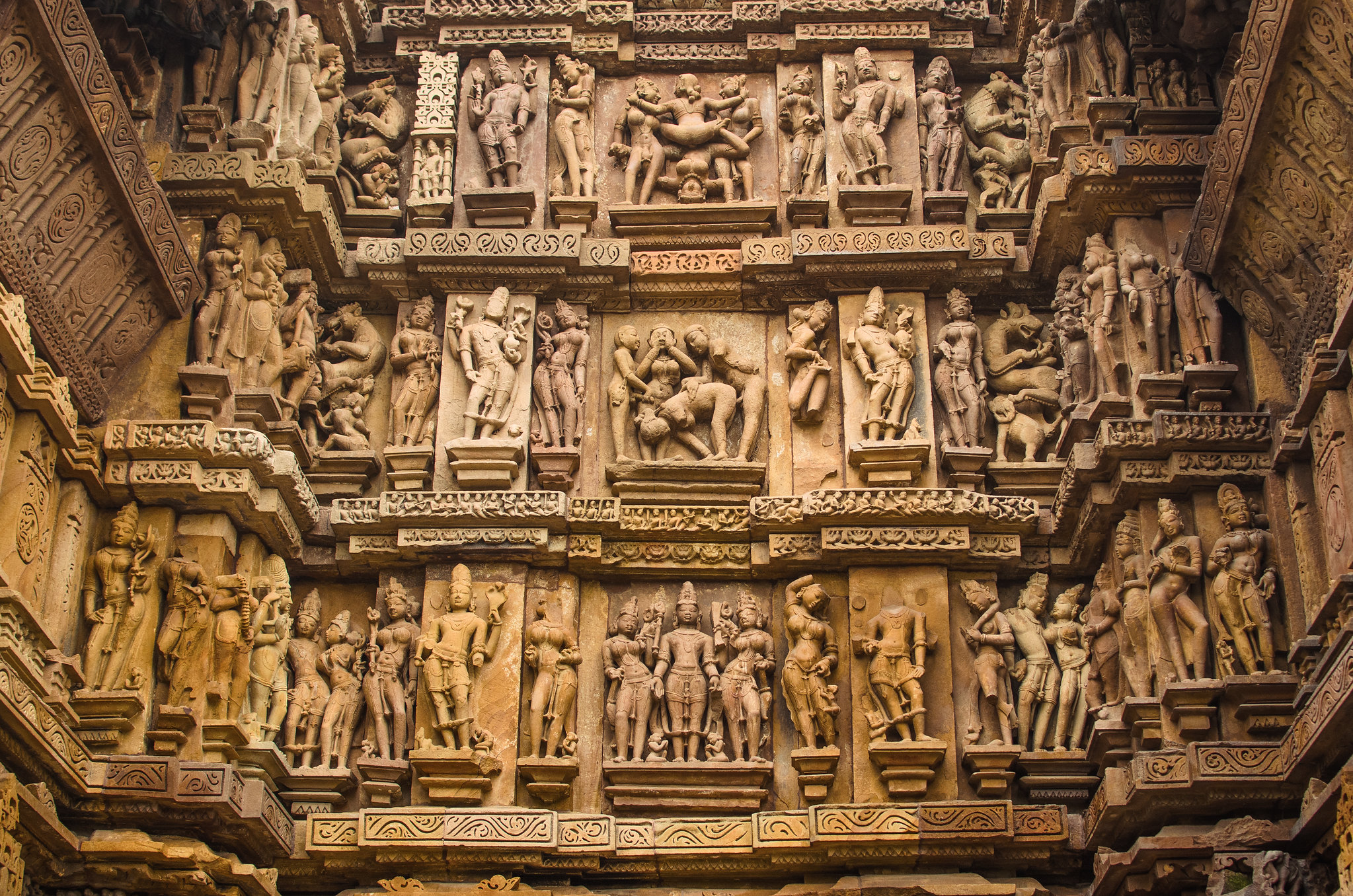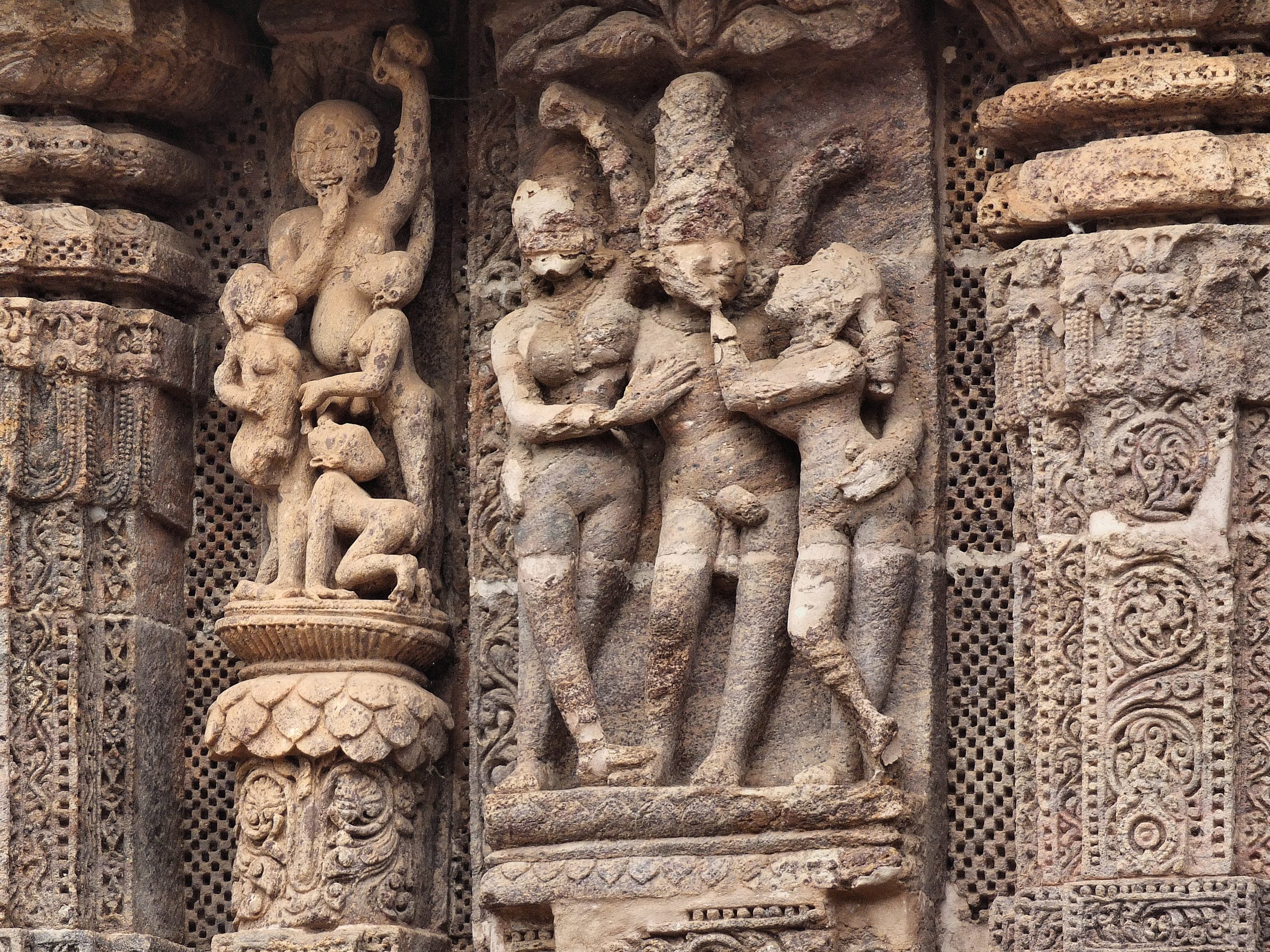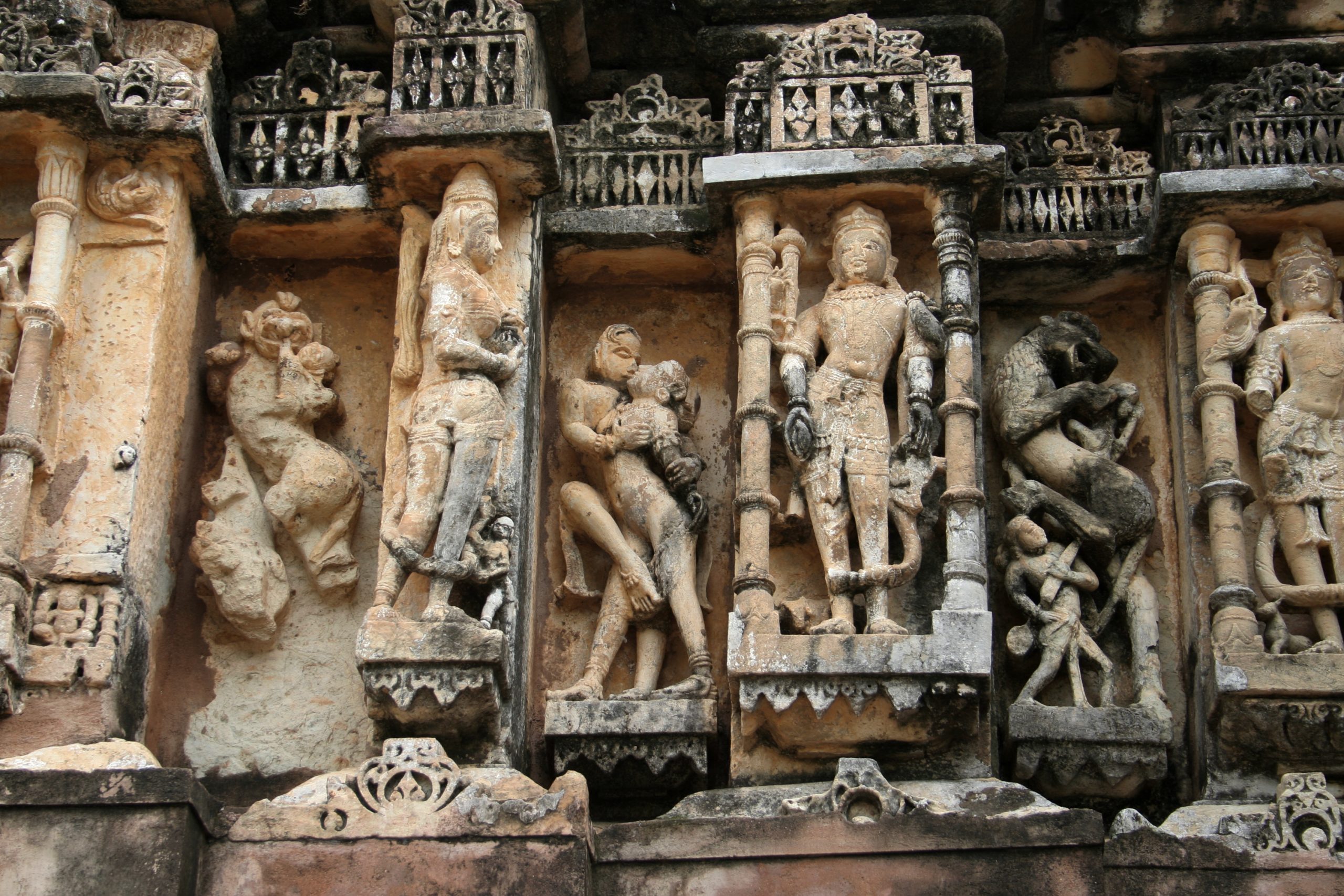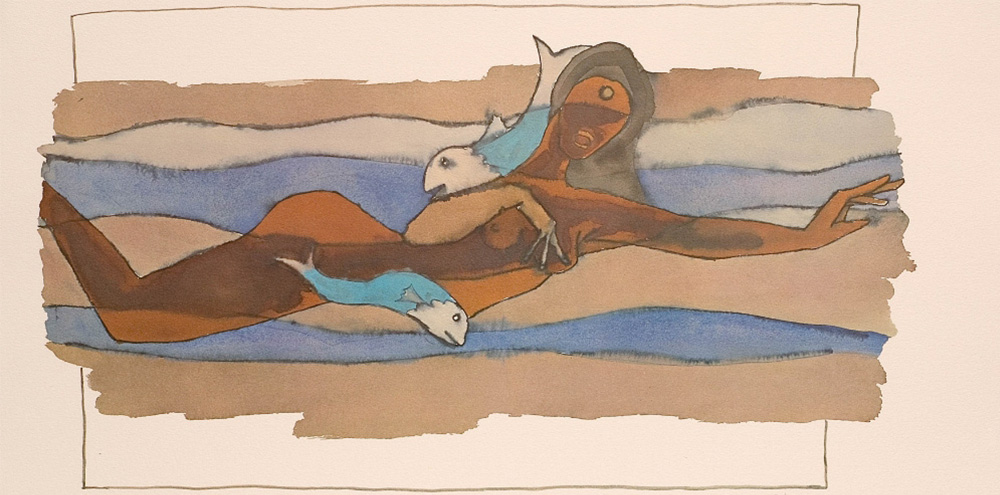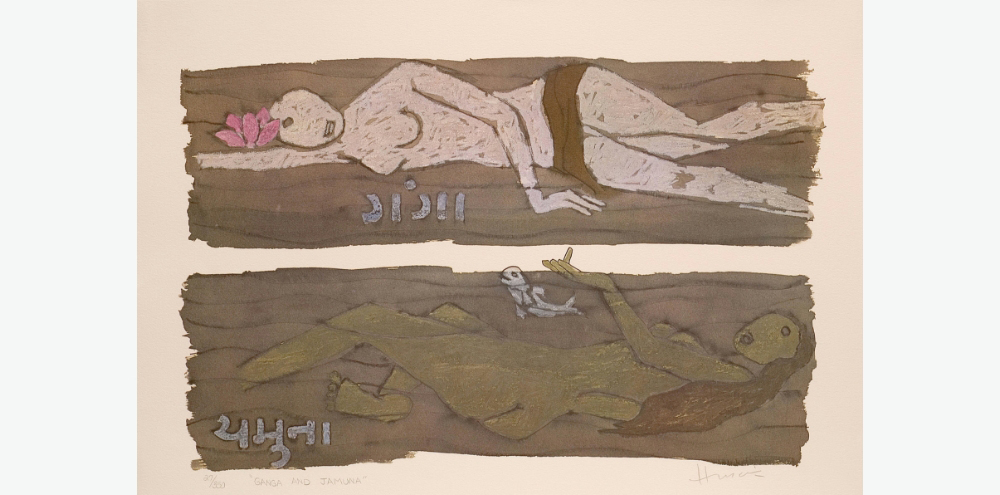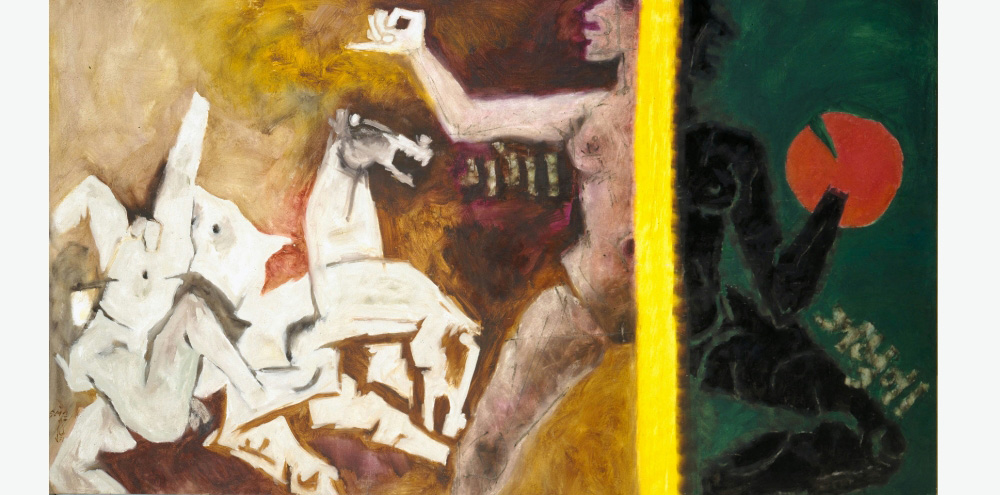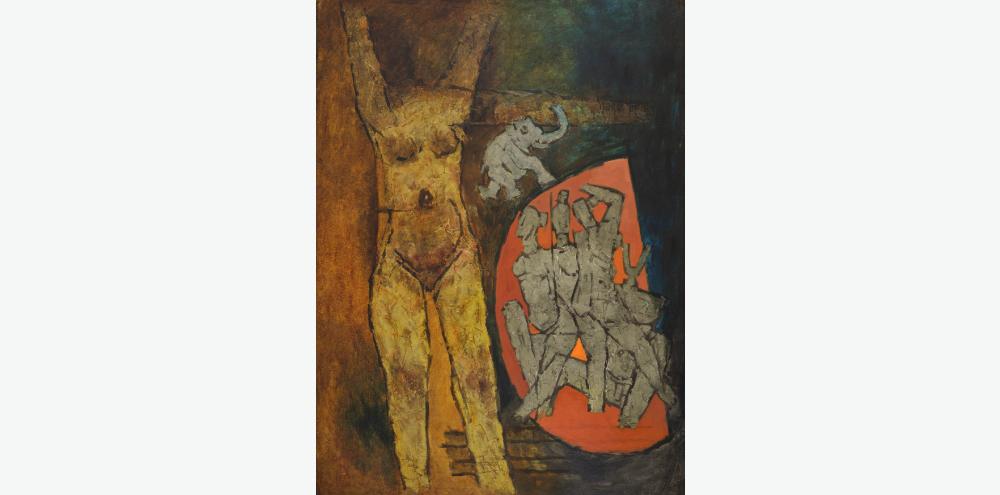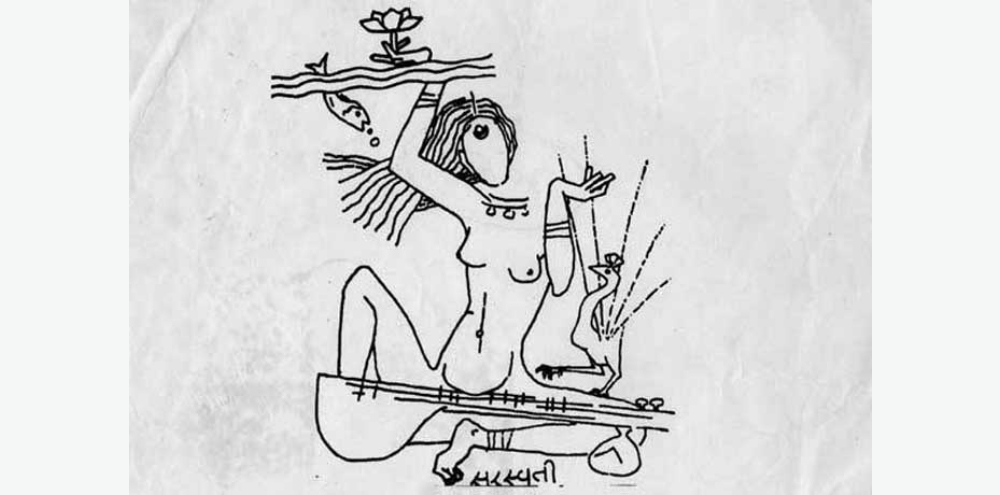Nude Bodies in Indian Art: The Husain Affair
Across ancient Indian art — especially in temple sculpture in South Asia — it is common to see representations of the female nude and images containing sexual themes. Often these explore themes associated with fertility, abundance and prosperity, combining the sacred and the sensual.
However, when present in modern and contemporary art from the region, such depictions have at times been the subject of great debates. The most well-known controversy around this topic centres on India’s renowned painter Maqbool Fida Husain (1915–2011). Let’s take a look at his practice, the questions surrounding interpretations of his work, and the broader ideas they enable us to consider.
Life and Practice
Husain, a self-taught painter born in 1915 in Pandharpur, Maharashtra (Western India), arrived in Bombay in 1937 to try his luck as an artist. In his early years in the city, he earned a living by painting cinema billboards, transitioning to work as a full-time professional artist by the late-1940s, soon after India had attained independence. While he retained his interest in cinema and the aesthetics of billboard-painting in his work, he also joined the Progressive Artists’ Group (PAG), founded by an eclectic group of artists who practised in a range of styles and mediums, which we will learn more about later in the Course. While several key artists of the PAG left for Europe within a couple of years, Husain remained in India for a large part of his life. He was tied to the country by family and the richness of its culture, which over the years became a central theme of his practice.
Husain was unique in how he sought to connect India’s past and present in his work, but his career-long exploration of mythology, goddesses and the female form was seen as contentious in India’s politically charged climate, particularly in the 1990s. As a Muslim artist interested in portraying the image of modern secular India, he found himself subject to criticism for painting nude figures, including Hindu goddesses.
Let’s read some of his works in relation to their historical precedents and briefly examine the ‘Husain affair’ to learn more about how developments in art intersect and engage with socio-political issues.
The Goddess as Icon
The work that instigated the ‘Husain affair’ was his drawing of the Hindu goddess Saraswati (Image 9) from the 1970s. This line drawing depicts an unclothed figure of the goddess of learning, wisdom, music, art and speech. Various culturally specific attributes or elements connected to the goddess’ role in the Hindu pantheon help us identify her through what is called an ‘iconographic’ reading of the artwork. Saraswati is usually featured with four arms, each holding one of her ‘attributes’: a book, a rosary, a water pot and a musical instrument called veena, which symbolises creative arts and harmony. Husain shows her with two arms, so she appears more human even as the drawing itself remains somewhat abstract.
In Husain’s drawing, Saraswati is faceless and seated across her veena, the most prominent symbol associated with her. While she is often represented with a goose, or hamsa, considered to be her vehicle, Husain shows a peacock at her feet, perhaps to indicate a celebration of dance and splendour. Further, while she is typically depicted near a river owing to her early history as a river goddess, in Husain’s drawing, she literally holds up a section of water, marked clearly by the fish diving beneath its surface. By selecting few but not all of Sarawati’s traditional iconography in his depiction, the artist foregrounds his creative choices while ensuring the goddess is recognisable, even if you do not read Devanagari script that identifies her at the bottom.
Backlash and Opposition
Husain’s drawing did not attract much attention until 1996 when the magazine Vichar Mimansa published the article ‘MF Husain: A Painter or Butcher’, showing the artist’s renditions of semi-nude Hindu goddesses. Nationalist organisations including Hindu Jagruti Samiti and Vishva Hindu Parishad were outraged at what they perceived to be profane images; they threatened the artist, attacking his home and filing more than 1000 law suits against him.
A similar controversy concerning Husain’s painting from 2005 of a female figure on the map of the Indian subcontinent followed in 2006. The painting — that we see in Image 10 — was called Bharat Mata (Mother India) though Husain insisted that he did not give it that title. Husain’s portrayal of Mother India followed iconic representations of India, including a century-long personification of the country as a female goddess (Image 11), which we will look at closely later in the Course. In Husain’s work, she appears as a nude figure in the form of the subcontinent. The painting infuriated right-wing groups, leading to more death threats, which resulted in the artist leaving the country to take up Qatari citizenship, eventually dying in exile.
In this Topic, we have looked at two of Husain’s works to understand how to ‘read’ the iconography of an artwork, which is a skill we will continue to develop over this course. This can at times be more challenging with works of modern and contemporary art that may not represent a recognisable figure, or that may be entirely abstract.
This case study of MF Husain takes the analysis of visual imagery a step further, showing us how the interpretations of artworks are profoundly shaped by social and political contexts and issues. Often, artists’ backgrounds and identities can also determine how their body of work is received by the public. As perceptions and standards of aesthetics, beauty and value change over time and across contexts, so does an audience’s reception of art. For instance, while nude representations and erotic imagery have long been a part of India’s artistic traditions, the changing moral landscape in recent centuries, particularly since the colonial period, have engendered a more conservative attitude towards these themes. This has continued even in the present day.
Exploring depictions of nudity in Indian art, this Topic introduces MF Husain’s practice and the ways in which his artworks have been perceived. Find out more about Husain, and the Progressive Artists’ Group through the links below.
Further Readings


